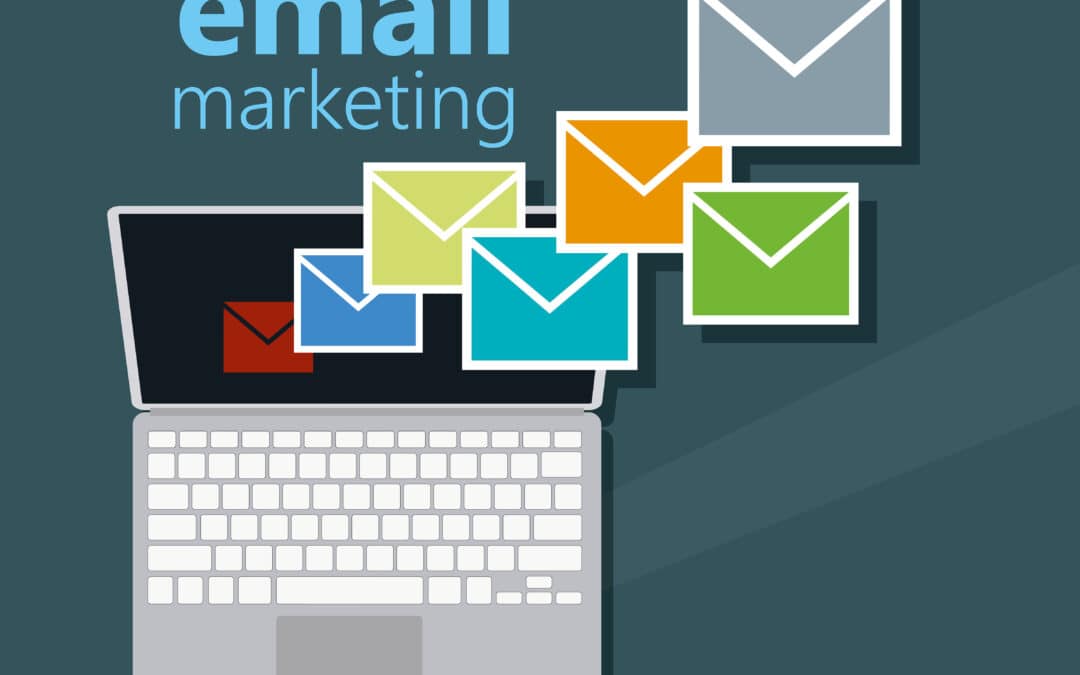When it comes to successful marketing strategies, did you know email marketing consistently ranks as one of the best tactics? Studies show “email generates $42 for every $1 spent, which is an astounding 4,200% ROI, making it one of the most effective options available. In addition, HubSpot reports that “78% of marketers have seen an increase in email engagement over the last 12 months” and “Marketers who use segmented campaigns note as much as a 760% increase in revenue.”
As you can tell, research backs up claims that email marketing is worth the investment. In addition to the hard numbers, there are additional reasons this tactic plays an important role in your overall content marketing strategy.
As Mail Munch points out, email marketing:
- Increases your reach and communication.
- Is flexible, measurable and scalable.
- Improves your revenue.
- Keeps data ownership with you.
How, then, can you include email marketing as an effective component of your content strategy? Keep reading to find out!
How To Create Effective Email Marketing Messages
Before you begin your email marketing campaign, make sure you have a clear understanding of your budget and goals. Once you’ve clearly established them, you can tackle the question of how you’ll achieve your goals.
Effective Email Marketing Tactics
When it comes to the most effective email marketing tips, Mail Munch reports the most important tactics are to:
- Utilize a highly personalized outreach
- Optimize post-purchase emails
- Use social data to enrich CRM
- Be mobile responsive
- Take advantage of sophisticated tools
- Embrace inbound
- Automate, automate, automate
- Use revenue focused metrics
Campaign Monitor backs up the importance of personalization as well, sharing that, “74% of marketers say targeted personalization increases customer engagement, and they see an average increase of 20% in sales when using personalized experiences.”
Whether you’re putting together an email marketing strategy for a small business, a medium-sized company or a major organization, personalization matters. In fact, “Personalized emails are more likely to be opened that those without personalization and revenue is 5.7 times higher in emails that employ personalization.”
As you get to know your subscribers more, you can segment your lists better. Neil Patel recommends separating them based on your target audiences’ variables, such as:
- Demographics (e.g. age, gender, job title, income level)
- Survey or quiz results
- Email engagement
- Geographic area
- Past purchases
- Amount spent
- Position in the sales funnel
- Website behavior
- Time since last purchase
- Personal interests
Once you have subscribers divided into specific lists, you can send more targeted, personalized emails based on their information. For example, if you have the lists segmented by geographical location, you could send an email letting one group of subscribers know about an upcoming event in their area.
Clearly, this can be a lot to manage. The good news is you can also subscribe to a third-party email marketing management platform (such as MailChimp or Constant Contact) to take advantage of tools and services they offer to assist with personalization as well as list segmentation, automation, testing and responsive design.
Speaking of MailChimp, their blog shares a lot of helpful advice based on research into what’s worked well for their customers. In addition to the tactics above, the email marketing platform recommends:
- Using landing pages to provide, “A clear call to action and an easy space to make purchases.” This tactic has helped their customers increase their list growth rates.
- Incorporating social media into your email marketing. MailChimp provides tools to incorporate Facebook and Instagram ads directly into your email campaign.
- If it’s appropriate for your brand voice, incorporate emojis into your emails.
- Rely on clear, high-quality visuals. As MailChimp explains, “What we do know is that when it comes to the relationship between click rate and the ratio of text to images in campaigns, keeping the amount of copy per image lower leads to success.”
Email Marketing Specifics: Creating Your Messages
Now that you have an idea of what tactics you want to include in your email marketing strategy, it’s time to get down to actually creating messages for your subscribers.
As Omnisend shared in their recent post about best practices for e-newsletters, they should include these elements:
- A strong subject line. Enticing subject lines encourage more people to open your e-newsletter. As more people open them you will get more site traffic.
- Easy-to-read text and images. Consumers have a limited amount of time to read through information. Make your content easy to skim through so that subscribers can find the information they need quickly.
- An effective CTA. Each of your e-newsletters need a strong call to action. This will often be asking your customers to interact with your business in some way. The simplest way to do this is by asking them to click a link or a button that links to your website.
- Consider your mobile audience. The majority of people use their mobile devices to check their emails. As such, test to make sure your e-newsletters are formatted for both mobile devices and computers.
- Exclusive incentives. People love deals or free things. If you offer these through your e-newsletter, only those who receive it will have access to it.
What type of content should you include? The biggest key here is to know your target subscriber. What messages will they want to receive from you? How will you provide them value?
For example, if you have a younger target audience, researching into millennials’ preferences will help guide your email content. As this blog post shares:
- 73% of millennials prefer to communicate with retailers via email.
- 1 in 3 millennials check their email as soon as they wake up.
- 81% of millennials want the companies they buy from to implement sustainable and ethical practices.
- 70% of millennials say they’ll repurchase from brands that have loyalty and rewards programs.
- Millennials will engage more with your brand if your email marketing is visually appealing.
10 Common Email Marketing Mistakes
As you begin (or revisit) your email marketing campaign, make sure you avoid these all-too-common e-newsletter mistakes:
- You forget to look at the analytics. How will you be able to measure success without objective data? Each time an e-newsletter is distributed, take a look at how many recipients open it, which links they click, if they forward it, etc. As you look at this information, try to notice any trends you see emerging. Do your readers seem to like a particular type of content more than another? Is the open rate higher or lower when you send it in the afternoon as opposed to the morning? Pay attention to these tendencies and adjust your email marketing campaign accordingly.
- Your emails aren’t mobile friendly. If your newsletter doesn’t load on mobile devices or is formatted in a way that’s hard to read, readers won’t take your email seriously. Ensure images, email size and videos that you send are compatible with mobile devices so that potential customers can find your emails.
- You lack consistency. Sporadically sending out emails to subscribers may frustrate them and can cause them to unsubscribe when they see them. Instead, implement your email marketing on a consistent schedule and stick to it. You also want to be consistent with the content you share in your emails so subscribers will know what to expect and be more interested in opening them.
- You over communicate. Your subscribers follow you for a reason, but if you spam them with too many emails they will unsubscribe. When you create your email marketing schedule, don’t overload it with too many messages going out too frequently.
- You ignore design. While a generic template or no HTML at all can be tempting, ignoring a custom-design means you’re losing brand identity. Custom templates allow you to showcase your business in a unique way and make it stand out from the rest of the emails people receive.
- Your headlines are dull. You want your marketing emails to be opened at the very least. Create a compelling subject line that grabs the attention of your recipients. Subject lines that lack pizazz can be easily categorized as spam to potential customers.
- You forget to customize the preview text. This is the preview of what shows up in recipients’ inboxes. As HubSpot explains, “If your email client supports preview text, also known as pre-header text, you can optimize it for every email you send. Allowing this text to auto-populate is a lost opportunity to grab attention or delight your recipients.” Most email marketing platforms include a place for you to customize this space.
- Your emails are too long. When it comes to email marketing, the shorter the content, the better. Each paragraph of your email should be about 3 to 4 lines at the most. Your potential customers are in a hurry and usually scan through emails. Ensure that your first sentence has the most important information so they won’t miss the crucial parts of your message.
- You don’t repurpose content you’ve already created. There’s no need to reinvent the wheel every time you send a newsletter. Share your latest blog post or a fascinating article you shared on Facebook. Remember, it takes multiple impressions for consumers to remember a brand, so repeat your message in as many channels as possible.
- You sound like a used car salesperson. Just because email marketing isn’t face-to-face doesn’t mean you can’t add a little personality to your messages. Try adding a little humor, fun facts or anything else that may tickle the fancy of your potential customers.
Do You Need Help With Your Email Marketing Strategy?
Now you’re ready to get started with or revisit your email marketing campaign! Want to learn more about sending effective e-newsletters for your business? Contact us for a complimentary 30-minute consultation with our CEO, Erika Taylor Montgomery. Our team is ready to help your business grow!
Special Offer:
Sign up for a complimentary consultation during December and receive an Annual Marketing Planning Guide valued at $475! We offer a 30-minute phone consultation with our CEO, and can answer your questions and discuss your specific marketing needs - no strings attached. Call 408-218-2391 or contact us today to arrange your consultation!




